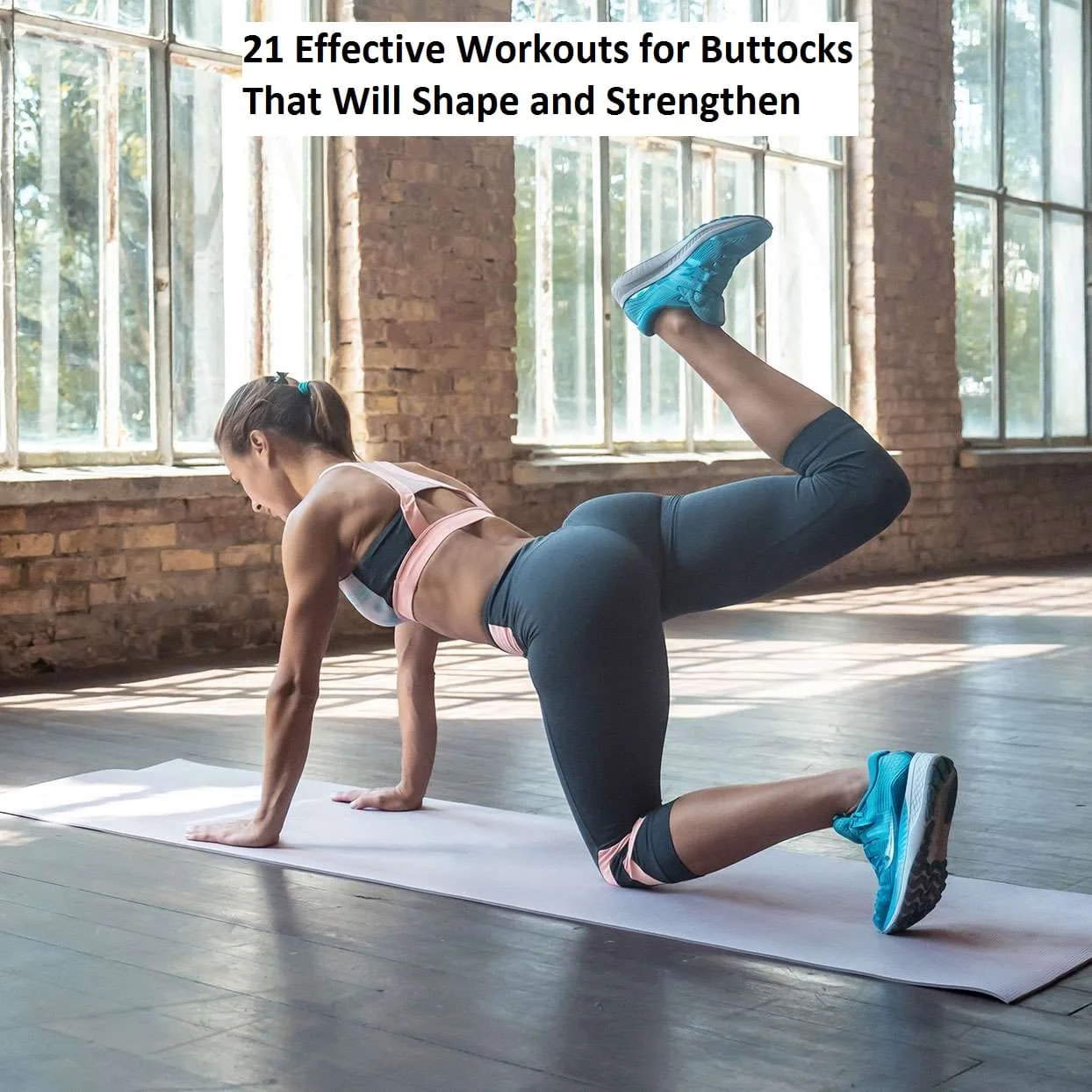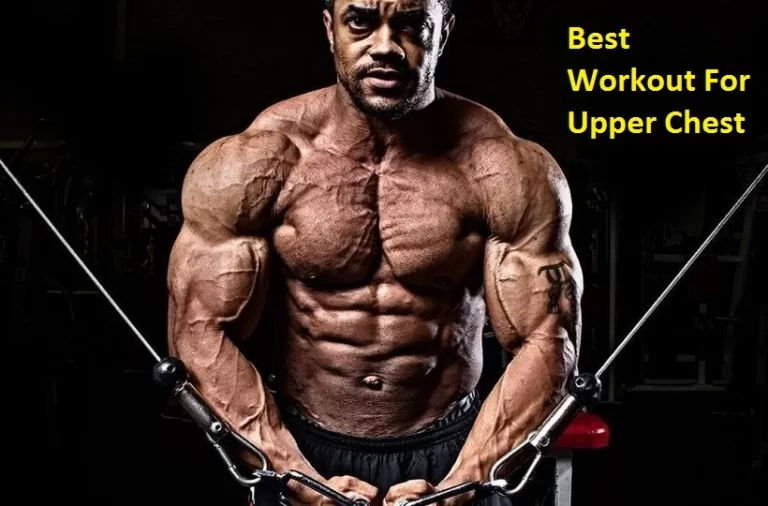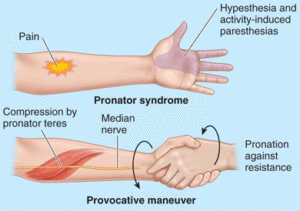21 Effective Workouts for Buttocks That Will Shape and Strengthen
Embarking on a journey to sculpt and strengthen your buttocks can yield not only aesthetic rewards but also substantial benefits for your overall physical health. Your gluteal muscles—comprising the gluteus maximus, medius, and minimus—are not only responsible for the roundness and curvature of your rear but also play a crucial role in supporting your spine, stabilizing your pelvis, and enhancing your athletic performance.
Whether your goal is to achieve a firmer, more lifted appearance or to enhance your strength and functionality, these workouts offer a pathway to a stronger foundation and increased self-confidence. Get ready to unlock the secrets to a well-defined, sculpted backside as we delve into a diverse range of exercises that will leave you feeling the burn and experiencing the gains. Your journey to a bootylicious transformation starts here.
Table of Contents
Why Are Powerful Glutes Essential?
It’s crucial to work on your buns for several reasons. They support in the following ways:
- Power
- Good posture
- Stability
- Strength
- The impact of stiff hip flexors being lessened
- Reducing the negative consequences of “butt amnesia” (when your glutes don’t fire up, putting extra strain on your lower back, hips, knees, and even your ankles)
The best Workout for Buttocks are:
In this comprehensive guide, we present you with a collection of 21 highly effective workouts meticulously curated to target and transform your buttocks. From classic exercises like squats and lunges to innovative techniques designed to activate and engage your glutes, these workouts are tailored to challenge every facet of your lower body muscles.
Bulgarian Split Squat

How to do it:
- Squat at a long stretch in front of a bench.
- You must be holding a dumbbell in each hand and the top of your left foot should be resting on the chair next to you.
- Your entire frame should be lowered until your back knee is virtually in contact with the floor and your front thigh is perpendicular to it. Even with just one leg, strength gains are still discernible.
Single-leg deadlift
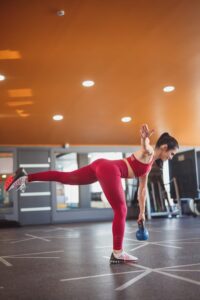
How to do it:
- Each hand should hold a dumbbell. Your thighs should be covered by your hands.
- Standing with one knee slightly bent and leaning to the right. Put your core muscles to work.
- Start the motion by hinging at the hip. Let the weights fall to the ground in front of you as you bend, palms facing one another. Your upper body will drop towards the floor as your left leg straightens out and your right foot remains on the floor.
- Hinge slowly after bringing your left leg as nearly perpendicular to the ground as you can without falling over.
- Return your leg gently to its starting point.
- 3 sets of 15 repetitions should be completed for every leg.
Front Squat
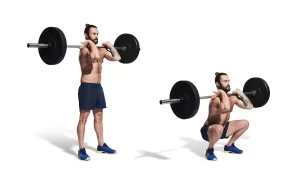
How to do it:
- Set a barbell on an exercise rack at a height about equal to your shoulder.
- As you directly hold the power at shoulder width, raise your elbows until your upper arms are perpendicular to the floor.
- Put the bar on your hand’s palm after taking it from the rack.
- Your elbows have to be wholly extended throughout the entire action.
- Step back while keeping your backs turned out and your feet shoulder-width apart.
- Squat as low as you can to keep your lower back in its natural bend.
Romanian Deadlift

How to do it:
- A good deadlift variation involves standing with your feet hip-width apart and gripping a barbell with your shoulders.
- Try to flex your hips as far as you can.
- Experience free to flex your knees as needed as you drop the bar down until you feel some tension in your hamstrings.
- Keep your lower back’s natural curve constant.
Curtsy Lunge
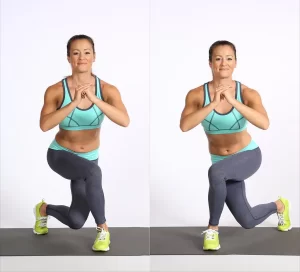
How to do it:
- Standing with your feet hip-distance separate your arms should be at your sides.
- Hold your chest up and lunge with your right foot below your left leg.
- Lunge down until your back knee is only a few inches off the ground.
- Gradually take a standing position again. Continue on the other side.
Glute bridge
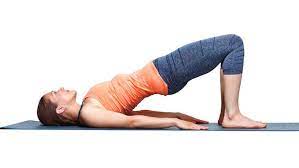
How to do it:
- Place a mat under your feet and lie on your back with your knees bent. Hip distance should separate your feet.
- Contract your glutes and press your heels into the ground as you exhale to lift your hips upward towards the ceiling.
- Pause briefly at the peak before slowly descending back to the mat (shoulders first, lower back, then buttocks). A rep is one.
Single-leg Glute Bridge
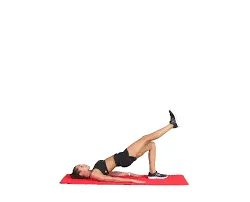
How to do it:
- Laying on your back on the ground, bend both knees until your feet are close to your butt.
- While holding your abs, lift one leg and bring the knee to your chest.
- Place the heel of the opposite foot on the floor.
- Bridging up will help you align your body.
Hip abduction

How to do it:
- Place your top arm in the direction of your chest while lying on your side to support your upper body.
- Lift your top leg towards the ceiling while maintaining the most rigid and locked upper body and core you can.
- Controlled descent back down is required. Repeat.
Squat jumps
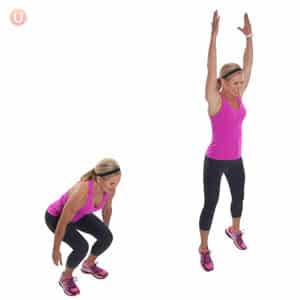
How to do it:
- Place your feet hip-width apart as you squat down.
- Pressing through your heels and jumping with your glutes will allow you to powerfully explode upward. At the peak of the jump, attempt to fully extend your legs.
- Repeat while landing in a squat stance.
Kettlebell swing
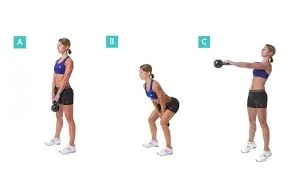
How to do it:
- When picking up the kettlebell with both hands in an overhand grip, squat down from a standing position with your feet shoulder-width apart.
- Hold your back straight and your knees slightly bending throughout the action. Do not look downward.
- Bounce the kettlebell out and up to shoulder height by driving your pelvis forward.
- Let the weight reappear and swing between your legs while hingeing at the hips.
Barbell hip thrust
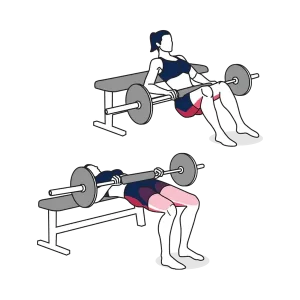
How to do it:
- Put your shoulder blades up against a bench or step while seated on the floor. Place a dumbbell or barbell on your hips if you’re adding one.
- Push up through your hips to elevate your rear off the ground while maintaining a tucked-in chin.
- Your shoulders, hips, and knees should be in a straight line as you clench your bottom at the top. Slowly and carefully, stoop your back down.
Clamshell
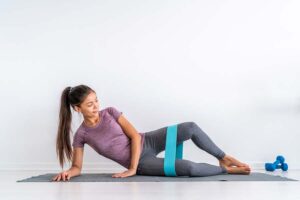
How to do it:
- Lay on your left side, stacking your legs, placing your right hand on your hip and your head resting on your left arm.
- Knees and hips should be bent 90 degrees. Your butt and feet should be parallel.
- Maintaining a straight line with your feet, engage your core, and elevate your right knee as high as you can. Maintain your hips stacked and your left knee firmly planted on the ground. Avoid turning your hips back.
- The highest point lasts for a while before gradually falling to the starting position.
- Continue to the other side after completing three sets of 15 repetitions.
Donkey kicks
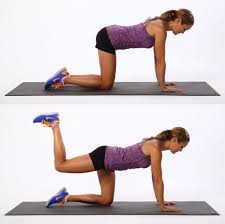
How to do it:
- Place yourself on all fours to begin. Keep your spine neutral, your shoulders down on the ground, your legs hip-width apart, and your palms flat on the ground.
- By stabilizing your core, raise your right leg off the surface while keeping your right knee bent and your foot flat.
- Your gluteal muscles are used for pushing your foot forward. Stop, then squeeze the top. Verify that your pelvis and hips are still facing downward.
- Go back to the beginning place.
- 3 sets of 15 reps on each leg are required.
Banded side step

How to do it:
- Start in a shoulder-width position for your feet.
- Between your ankles or slightly under your knees, secure a resistance band. Your outside legs and glutes will feel the resistance.
- Your booty should descend about a fourth of the way as you flex your knees.
- Take a step to the right with your right foot, releasing the band’s tension before coming back to the center. Repeat.
- When repeating on the left, take 10 side steps to the right. Make three sets for each side.
Reverse lunge

How to do it:
- Place your feet shoulder-width apart as you stand. Put your hands on your hips or clasp them together in front of your chest as seen in the illustration. This is where everything begins.
- Walk backward about two feet, lift your right foot off the floor, and land with your right foot’s heel while maintaining your heel off the floor’s surface. As you bend both knees, your left quad and right shin should be about parallel to the floor. To ensure that your back is flat and not arched or rounded, your body should lean slightly forward. As well as having your butt and core engaged, your left knee should be over your left foot.
- Put pressure on the left foot’s heel to return to your starting position. It’s one rep.
- When switching to the other leg, finish all of your reps on the first leg. Another alternative is to alternate the legs.
Plié Squat

How to do it:
- Spread your feet out beyond shoulder width when standing.
- Your feet should be pointed outward at an angle of 45 to 90 degrees so that they face in the same direction as your knees.
- Sit properly with your legs bent and your back straight.
- Squeeze your abdominal muscles while placing your hands on your thighs or hips.
- Squat down till your thighs are parallel to the ground when you no longer feel secure doing so.
- Hold with your back straight for a few seconds.
- Repetition is required.
Sumo Squat
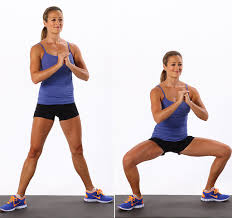
How to do it:
- Hold your feet wider than hip-width apart and take a step out with your toes. Put a dumbbell or kettlebell between your legs and keep it there with your left and right hands if you’re using weights.
- Bend your knees and push them out until your thighs are parallel to the floor. Then slowly drop yourself to the ground. Hold the weight in the middle while you flex your knees, and if it’s possible, stamp it repeatedly on the floor without letting go.
- Straighten your knees, keep your spine neutral, contract your glutes, and squeeze your inner thighs to slowly pull yourself back up.
Lateral Lunges

How to do it:
- Put your hands on your hips or grip weights as you stand with your feet hip-width apart.
- Step out to the left with a long stride while keeping both feet pointed straight ahead.
- Squat while bringing your hips down and bending your knee, maintaining a neutral spine.
- Your left leg should be 90 degrees bent while your right leg is straightened.
- Place your weight on your glutes and inner thighs rather than your knee by compressing your left inner thigh as you firmly push off your left foot to get it back to the center.
- Repeat as necessary, and then shift to your right side.
Goblet Squat
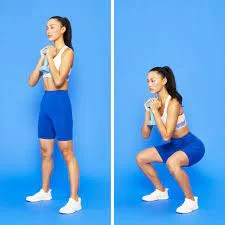
How to do it:
- Standing with your toes pointing out and your feet a bit wider than hip-width apart, hold a weight in each hand in front of you so that it hangs vertically.
- While shifting your weight into your heels, pushing your hips back, and bending your knees to lower into a squat, activate your core and maintain an elevated chest and a flat back.
- To stand, push through your heels, and tighten your glutes for one repetition.
Fire Hydrant
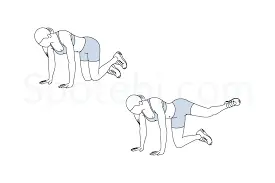
How to do it:
- Begin on all fours with your hands underneath your shoulders, knees under your hips, and feet together.
- While keeping your right knee extended to your hip, extend your right leg out to the side. To prevent your body from rotating as your knee is raised, keep your core engaged.
- Lower yourself to your starting position. It’s one rep.
- Perform each repetition on the same side. For each round, swap sides.
Barbell Squat
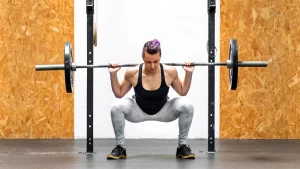
How to do it:
- Grab the bar as far away as is comfortable and squat down into a cage or squat rack.
- Pushing with your shoulder blades, remove the bar from the rack.
- Standing with your feet shoulder-width apart and your toes pointing slightly outward, take a step back.
- Take a deep breath and drop your body as low as you can without losing the curve in your lower back by bending first your hips and then your knees.
- As you drop, extend your knees.
- Pushing your legs wide, extend your hips to stand back up. A rep is one.
Summary
In conclusion, focusing on workouts for the buttocks can yield significant benefits for both aesthetics and overall health. By engaging in targeted exercises such as squats, lunges, hip thrusts, and glute bridges, you can strengthen and tone the muscles of the glutes, enhancing your body’s stability, posture, and athletic performance.
Consistency is key; incorporating these exercises into a well-rounded fitness routine and gradually increasing intensity will lead to noticeable results over time. Remember that a balanced approach to fitness, including cardiovascular exercise, full-body strength training, and a nutritious diet, is essential for achieving holistic well-being.
Additionally, listening to your body, allowing for proper rest and recovery, and maintaining proper form during exercises are crucial to prevent injuries and ensure long-term success. So, embark on your buttocks workout journey with dedication, patience, and a focus on overall health, and you’ll be on your way to a stronger, more confident you.
FAQs
How often should I work out my buttocks?
Aim for at least 2-3 times a week with rest days in between to allow for muscle recovery.
How many sets and reps should I do for buttocks exercises?
A standard guideline is 3-4 sets of 8-12 repetitions per exercise. Adjust the weight or resistance to challenge yourself but maintain proper form.
Can I do bodyweight exercises to build my buttocks?
Yes, bodyweight exercises like squats, lunges, and glute bridges can be effective for building your buttocks. Adding resistance over time can enhance the results.
Should I use heavy weights or light weights with high reps?
A mix of both can be beneficial. Start with a weight that challenges you within the 8-12 rep range, and gradually increase the weight as you get stronger.
How long will it take to see results in my buttocks?
Genetics, perseverance, and effort are a few examples of the variables that affect results. You might start noticing changes after a few weeks, but significant results often take a few months of consistent training.
Can I spot-reduce fat from my buttocks through exercise?
Spot-reducing fat from a specific area isn’t usually effective. Engaging in overall fat loss through a combination of exercise and a balanced diet is more likely to reduce fat in the buttocks.
What is the ideal gluteal shape?
Many people believe that the Upsidedown Heart Butt, also known as the A-shaped Butt, is the best-looking, most coveted, and most desirable butt form. The ideal waist-to-hip ratio, which is widely acknowledged, is 0.7. The upside-down heart-shaped butt is the one that most closely resembles this optimal ratio among all butt forms.

